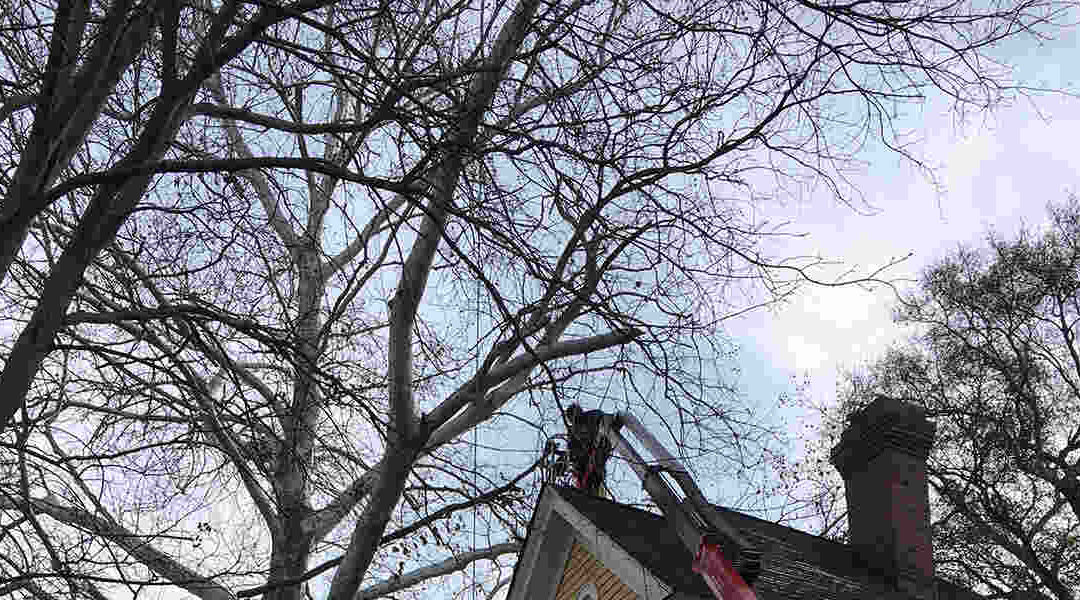Why do deciduous trees lose their leaves in the fall? You may have pondered this question as you watch your specimen’s lush green foliage transition into a fiery spectacle of reds, oranges, and yellows. Once this vibrant display has reached its peak, the leaves eventually descend.
As the go-to tree service in Wake Forest, our crew at Raleigh Tree Service has encountered numerous inquiries about this annual arboreal phenomenon. So, let’s leave no stone unturned and delve into the science behind it!
Changing Colors
The transformation from summer greens to autumn hues is thanks to the presence of three primary pigments within the leaves.
Chlorophyll
Chlorophyll is the workhorse, lending leaves their green color while orchestrating the process of photosynthesis. As days shorten and temperatures drop, food production becomes less efficient, so trees stop producing this substance to conserve energy.
Carotene
Another ever-present pigment, carotene, usually hides under the dominance of chlorophyll during the warmer months. As the green lessens, the orange and yellow finally hues emerge.
Anthocyanin
Then, there’s anthocyanin, the late bloomer of the bunch. Leaves develop this reddish-purple substance in the middle of fall, under the right mix of sunlight and cool temperatures.
Dispensing With Leaves
In preparation for the winter months, trees undergo what’s called the abscission process. This scientific term, derived from the Latin meaning “to cut off,” refers to the intentional severing of connections between a plant and its leaves.
How does it work? Two main hormones are at play here: ethylene and auxin. Ethylene, often dubbed the ripening hormone, encourages abscission, whereas auxin, synthesized at leaf tips, fights against it.
As the daylight diminishes, auxin production drops, tipping the balance in favor of ethylene. One by one, the leaves lose their grip and gracefully drift down to form a crunchy forest carpet.
Why Drop the Leaves?
Why do deciduous trees lose their leaves in the fall in the first place? There’s a strategic reason behind it, and it all comes down to survival.
Save Water
Firstly, dropping leaves allows trees to conserve precious moisture during the dry winter months. Imagine those broad leaves acting like tiny evaporators, each one releasing droplets of water into the air. Come winter, when water sources become scarce, deciduous trees cut their losses, and down those leaves come.
Spend Less Energy
Photosynthesis is an energy-intensive process requiring sunlight and warmth, both of which are in short supply during winter. So, trees take a breather, halt photosynthesis, and survive on stored energy reserves.
Wind Protection
Winter storms and gales can be brutal, and branches laden with leaves face the full force. By dropping their leaves, trees present less resistance to the wind, reducing the risk of damage.
Consult a Certified Arborist
In a nutshell, deciduous trees are the ultimate survivalists, practicing energy efficiency, water conservation, and damage control all in one go. Now, that’s what we call being smart with resources!
If you notice any unusual leaf fall or discoloration outside the typical seasonal changes, it may indicate a problem. Dial 919-889-5783 and let our specialists at Raleigh Tree Service lend a hand. With in-depth knowledge and a green thumb, we can:
- Diagnose any tree-related problems and suggest appropriate solutions
- Provide professional advice on maintenance
- Offer emergency services in case of sudden tree collapse or damage due to severe weather conditions
- And more
Beyond answering the concern, “Why do deciduous trees lose their leaves in the fall?” our blog also covers various topics, from what to do with a tree trunk turning black to general fertilization tips; explore it today and immerse yourself in a world of arboreal knowledge!


